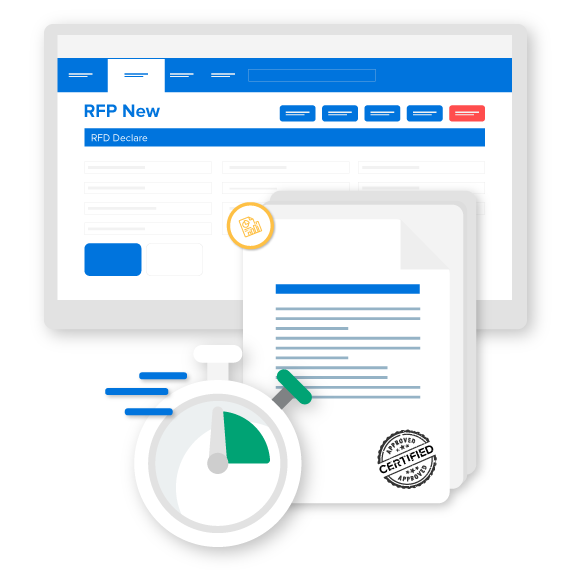
16 Mar
The grain industry in Australia has been witnessing significant growth in recent years, driven by increasing demand for grains from both domestic and international markets.
According to a report by IBISWorld, the grain-growing industry in Australia was expected to grow by 12.1% in 2021, and industry revenue is forecasted to increase at an annualised rate of 7.1% by 2026.
This growth will be driven by favourable weather conditions, increasing use of technology in the industry, and the government’s focus on promoting agricultural exports to support the industry’s growth.
As a result, significant growth potential is expected for the Australian grain industry in 2023 and beyond, making it an attractive opportunity for grain exporters.
In this blog post, we will discuss the current market trends and opportunities in the grain industry, the challenges grain exporters face, and how to navigate the complexities of global trade.
Overview of the Grain Industry in Australia
Australia is one of the world’s largest exporters of wheat, barley, and canola, with a reputation for producing high-quality grains that meet strict international standards.
According to reports, there has been a rise in global demand for wheat, particularly in key export markets such as Indonesia, Vietnam, and South Korea.
So what is driving this demand? A growing population, urbanisation, and changing consumer preferences for high-quality, safe, nutritious food products.
Opportunities in the Australian Grain Industry
As an Australian grain exporter, it is essential to stay up-to-date with the current market trends and opportunities in the grain industry to capitalise on potential growth.
Following is a detailed overview of the key factors contributing to the growth of the Australian grain industry and the current market trends:
Market Trends and Opportunities in the Grain Industry:
- Emerging markets: Emerging markets, such as those in Asia and the Middle East, have become attractive for Australian grain exporters seeking to expand their businesses. These markets have demonstrated substantial growth potential and present a lucrative opportunity to capitalise on this growth. One of the main drivers of this growth is the expanding middle class, which has been demanding high-quality food products. As these economies continue to develop, they increasingly rely on imported grain to meet their growing demand. Therefore, Australian grain exporters can leverage their expertise and capabilities to meet this demand, establishing long-term partnerships with these emerging markets.
- Changing preferences: Consumers increasingly seek healthier and more sustainable food products, creating a demand for non-GMO and organic grains. As a grain exporter, you can leverage this trend and expand your offerings to meet changing consumer preferences.
- Technological advancements: The grain industry is undergoing significant technological advances, including precision agriculture, IoT, and blockchain. These technologies can help you increase efficiency, reduce costs, and improve supply chain transparency.
Key Factors Contributing to the Growth of the Grain Industry in Australia:
- The conditions: Australia has a favourable climate and soil conditions, making it one of the largest producers of high-quality grains such as wheat, barley, and canola.
- Strong support: The Australian government provides significant support to the grain industry through grants, subsidies, and research and development programs, creating a favourable environment for growth.
- Investment: The Australian government has invested heavily in infrastructure such as ports, transport, and storage facilities, making it easier for Australian grain exporters to transport their products efficiently.
- Industry collaboration: The grain industry in Australia has a strong collaborative culture, with industry players working together to drive growth and innovation.
That said, significant challenges exist regarding grain exports that are worth mentioning.
Challenges Faced by Grain Exporters
As a seasoned grain exporter, you’re no stranger to the challenges of compliance with complex global trade regulations.
You know that these regulations can vary widely across different markets, covering everything from product quality and safety to packaging, labelling, and customs clearance. Staying up-to-date with the latest legal requirements is critical to avoid costly delays and penalties.
You’ve also faced the logistical challenges of coordinating with shipping companies, freight forwarders, and customs agents to ensure your products’ safe and efficient transportation across international borders. You know the risks involved in transporting grains, such as managing temperature and humidity during transit and ensuring your products arrive in good condition.
You also understand that potential risks such as product damage, loss, or theft during transport can result in significant financial losses and damage to your business’ reputation. Therefore, the option of utilising technology and software to mitigate these risks and streamline your export process cannot be understated.
One way to do this is by utilising digital platforms to manage your supply chains, automate documentation and compliance requirements, and track shipments in real-time. For instance, the comprehensive Global Trade Export Software by ImpexDocs is an excellent option to help you navigate the complexities of global trade and regulatory compliance.
As an experienced grain exporter, you’ve already navigated many challenges and are well-equipped to handle any that come your way.
By staying up-to-date with legal requirements, utilising technology and software, and mitigating potential risks, you can continue to ensure the smooth operation of your export business and remain successful in the global market.
Here’s how.
Why Use ImpexDocs’ Global Export Software Suite to Streamline Your Export Operations?
One of the key modules features of ImpexDocs’ Global Trade Export Software is its comprehensive compliance management capabilities. You can comply with complex global trade regulations and avoid costly delays and penalties. It will help you with Request For Permit (RFP), Phytosanitary Certificates from Department of Agriculture, Export Declaration Number (EDN) from Customs, Prereceival Advice (PRA) from Ports/Terminals and Certificates of Origin from all Chambers of Commerce across Australia.
Plus, its unified digital platform allows you to manage everything – from sales contracts, sales orders and purchase orders to shipment bookings with over 60 shipping lines around the world ping and export documentation requirements.
Moreover, the Global Trade Export Software logistics management capabilities can help you book shipments directly with over 60 shipping lines around thew world digitally from a single platform. It also helps coordinatinge with various stakeholders involved in the export process, including shipping companies, freight forwarders, and customs agents.
By leveraging technology such as ImpexDocs’ Global Trade Export Software, you can:
- Streamline your export operations,
- Reduce the time and effort required to manage your supply chain,
- Improve your overall efficiency.
With the suite’s advanced features, you can focus on growing your business and taking advantage of the rising global demand for Australian grains.
Wrapping Up
As a grain exporter, you have the advantage of a growing market with significant opportunities.
Understanding the current market trends and key factors contributing to the industry’s growth allows you to make informed decisions and capitalise on potential opportunities.
Moreover, you can streamline your export processes and improve efficiency by utilising innovative technological software such as ImpexDocs Global Trade Software, allowing you to drive growth and success in the competitive global market.
So why wait? Get started with the Global Export Trade Software by ImpexDocs to reap the benefits of global trade today.


